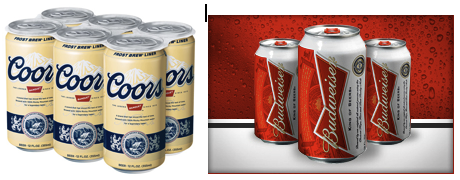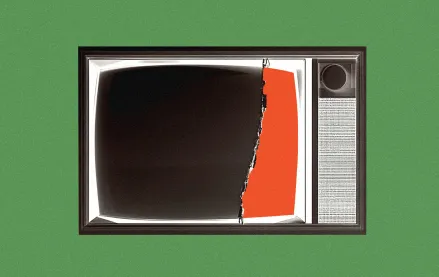
In this week’s installment of Battle of the Digital Brands, we take a look at two old-school marketers: Budweiser and Coors Light.
We examined the presence of each brand’s main Facebook, Twitter, YouTube and mobile sites and apps. Our analysis goes beyond raw numbers — anyone can buy a bunch of Facebook fans — as we take a broad view of how these two companies are represented in the digital world.
You’ll be surprised at what you see. Which brewer will be able to raise its glass in victory in the digital sphere? Read on to find out.
Budweiser
Facebook: Although Bud has 1.7 million fans on Facebook, with 12,000 talking about the brand, there’s no beating around the busch on this one: Bud’s clearly not investing in social media. The company updates its status only a handful times a month, but there’s heavy consumer engagement with the posts. The brewer is using music downloads, webisodes, birthday Buds and other tactics to get its fans to participate in sponsored events. But for a brand that’s supposed to be all about hanging with your buds, this message doesn’t come through on Facebook.
Twitter: Budweiser’s main Twitter feed has 1,700 followers and no tweets, while parent company, Anheuser-Busch, has tweeted four times to its 1,400 followers. Budweiser’s Twitter feed is nonexistent. It follows zero people and has produced zero tweets. It hasn’t even put in a branded profile picture, still using Twitter’s egg default.
YouTube: On Bud’s YouTube page, there are four videos, that have been viewed roughly 3.2 million times and have 1,100 subscribers. The company has put out some iconic commercials over the years — the Budweiser Frogs; the Clydesdales; the Waaazzup dudes. There’s no excuse for brands who have had success with TV spots to not have them up on YouTube. Additionally, the brewer’s Web series that currently resides on Facebook should be accessible on YouTube as well.
Mobile site: The Budweiser mobile site is designed well and includes the option to share it on Facebook right up top, which is a good way to get people to spread the word. It provides access to branded Budweiser wallpapers and ringtones. There’s a section of the site dedicated to Bud Racing, with updates on drivers that the brewer is sponsoring in the year ahead. Overall, the site is OK, but it takes a minimalist approach to what is possible on mobile. There’s no data-capture efforts on the site, which would typically ask consumers to sign up for the Budweiser email database or to receive text communications from the brand. There should be more content on the site such as the brewing process, details about products, anything to get consumers to spend more time there.
Mobile app: Budweiser’s app, Track Your Bud, tells users exactly where their bottle of Bud came from. Consumers are able to scroll through the entire brewing process, with videos outlining every step and interviews with the brew masters themselves. This app is a great branding tool and does a much better job of keeping people engaged than Bud’s mobile site does.
Coors Light:
Facebook: Coors Light has 1.3 million fans on its Facebook page with 26,000 talking about it. Coors Light has already set up its Timeline, but it only goes back to Dec. 2007. Coors Light uses photos, videos and marketing ploys on its wall. The company updates several times a week, and up to several times a day. There’s plenty of engagement with consumers, best evidenced by its posting of the Fan Photo of the Week, giving the page a human quality.
Twitter: Interestingly, it seems as if @coors on Twitter is a squatted account. There’s no Coors Light account — though there are a few international Coors Light accounts. It appears that the parent company Molson Coors is the main account and has 4,000 followers after 400 tweets. The Twitter feed is run by eight people, all whom use Molson in their handles. This is a well-run feed. Links go all over the place: from hockey to Pi day to promotional and areas of expertise (like what happens to recyclable bottles). There’s plenty of interaction among those who tweet to the company.
YouTube: The Coors Light YouTube page has 1,400 subscribers for its 18 videos, which have garnered 383,000 views. Coors Light has a bunch of roughly 30-second spots on its YouTube page. Though it has added four new videos in the last week, it seems as if it’s also missing a broader opportunity to house its older commercials. I mean, who doesn’t want to see Jim Mora’s fake press conference?
Mobile site: Coors Light does not have a mobile-optimized website. With 93 percent mobile penetration in the U.S. alone, Coors is definitely missing out on the mobile front.
Mobile apps: On the mobile app front, Coors does have a presence. The Coors Light Coach Cam lets users put a picture of Coach Jim Mora into photos and share them with friends. Another Coors app, Order Up, lets consumers order beers when in a bar by showing the app to the bar tender. Although Coors Light has an app presence, its apps don’t do much in terms of engaging consumers in an ongoing conversation.
Conclusion
Social assessment: Both alcoholic-beverage brands seem to be just dipping their toes into social. But Coors Light has the clear edge in social media, mostly because Bud hasn’t tweeted yet. One would think that these two big brands would be dominating the social space.
Mobile assessment: Budweiser is doing an OK job in the mobile space. Coors Light’s lack of a mobile site is a big miss. Its apps aren’t really doing anything for the brand either. Budweiser is kicking Coors Light’s ass in mobile. But Budweiser needs to work in some more content into its mobile site in order to make it even more engaging.
Giselle Abramovich contributed to this article.
More in Marketing

New partnerships, marketing fuel BNPL’s holiday surge
This holiday season, more brands deployed BNPL services with different payment options beyond the more familiar “pay-in-four” structure.

Pitch deck: How Amazon is recasting Twitch as a core part of its CTV pitch
Amazon is positioning Twitch as a defining asset in its CTV ambitions.

Netflix transforms former mall department stores into experiential venues
The location in Dallas opens this week, and one at the King of Prussia mall near Philadelphia opened last month.





